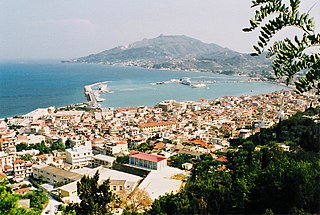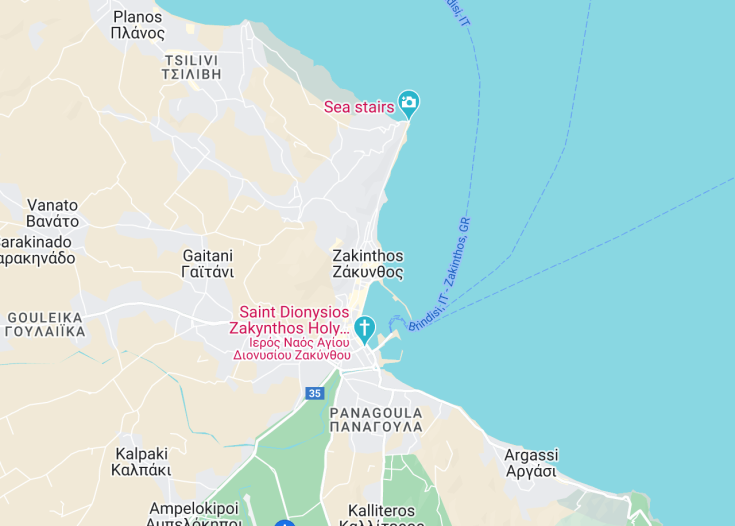Zakynthos, an enchanting island in Greece’s Ionian Sea, is famed for its pristine beaches, vivid turquoise waters, and rich cultural heritage. Visitors are captivated by its stunning natural landscapes and the enchanting Marine Park, home to the endangered Caretta-Caretta turtles. The island offers a perfect blend of natural beauty, historical sites, and modern tourist facilities, making it an ideal destination for travelers seeking both relaxation and adventure.
To make the most of your Zakynthos vacation, consider visiting during late spring or early autumn to enjoy milder weather and fewer crowds.
Don’t miss a boat trip around the island to explore secluded beaches and the famous Navagio Beach, with its iconic shipwreck.
Top things to do & see in Zakynthos
Select the following sights and activities to discover best tickets and tours available in Zakynthos.
Zakynthos: A Grecian Gem Nestled in the Ionian Sea
| Country | Greece |
| Time in Zakynthos | GMT+2 |
| Language spoken | Greek |
| Population | 40,759 (source: Hellenic Statistical Authority, 2021) |
| Currency | Euro (€, EUR) |
| Airports | Zakynthos International Airport “Dionysios Solomos” (4 mi / 6 km). |
Zakynthos, an enchanting island located in the Ionian Sea, is one of Greece’s precious jewels. This island is steeped in rich history and culture, imbued with a mythological charm believed to have been Homer’s Ithaca, the kingdom of the legendary Odysseus. Today, it is famous for its stunning landscapes, vibrant nightlife, and pristine beaches, including the acclaimed Shipwreck Cove, encircled by towering cliffs and intense turquoise waters that draw tourists from around the globe.
The island is not only a paradise for beach lovers but also a haven for wildlife enthusiasts. Zakynthos is a prominent nesting site for the endangered loggerhead sea turtles, which can be seen at Marathonisi, a small islet off the main island known as Turtle Island. Apart from its natural beauty, Zakynthos offers a rich tapestry of music and art, with numerous cultural and musical events held throughout the year, preserving and celebrating its traditional Greek heritage.
The local cuisine in Zakynthos is equally inviting, characterized by its fresh seafood, olive oil, and robust wines. Many family-run tavernas offer a chance to sample homemade dishes such as Stifado and Kleftiko which are deeply intertwined with the island’s culinary identity.
Architecturally, Zakynthos reflects a blend of Venetian influence as seen in many of its churches and buildings, particularly in the main town, which was rebuilt in the traditional Venetian Style after the earthquake of 1953. The influence extends to the island’s musical and artistic expressions, making it a crossroads of historical and modern influences.
Where is Zakynthos?
Zakynthos is situated in the Ionian Sea, to the west of mainland Greece.
Distances:
| Route | Distance by car | Time by car |
|---|---|---|
| Athens to Zakynthos | 180 mi (290 km) | 4 hours, 30 minutes |
| Patras to Zakynthos | 80 mi (129 km) | 3 hours, 15 minutes |
What is Zakynthos famous for?
Zakynthos is renowned for its stunning beaches, Venetian architecture, vibrant nightlife, and as a protective nesting ground for the endangered loggerhead turtles.
History
The island of Zakynthos, also known affectionately as Zante, holds a rich tapestry of history stretching from the ancient to the modern periods. This Ionian island of Greece, with its strategic position and fertile lands, has been a coveted jewel through various epochs.
Prehistoric and Ancient Times
Archaeological evidence suggests that Zakynthos has been inhabited since the Neolithic Age. Legends say it was named after Zakynthos, the son of the legendary Dardanian King Tros, who inhabited the island around 1500-1600 BC. Throughout ancient times, it became part of the powerful maritime empire led by Athens, contributing to the historic Peloponnesian War.
The Roman and Byzantine Eras
During the Roman occupation, Zakynthos was used as a place of exile but also benefited from the peace and stability of the Roman Empire, which brought architectural development and increased trade. Following the fall of Rome, Zakynthos was swept into the Byzantine Empire, facing frequent pirate raids and eventually falling under Norman rule by the end of the 11th century.
The Venetian Domination (1484-1797)
Perhaps the most defining era in Zakynthian history was the Venetian rule. The island was dubbed the ‘Fior di Levante’ (Flower of the East) and enjoyed significant economic growth, cultural development, and relative social peace under the Venetians. The Venetians fortified the island, and many architectural wonders from this period still stand today.
The French, the British, and Union with Greece
After a brief French rule, the British took control in the early 19th century, leaving a substantial mark with developments such as roads and an enhanced judiciary system. In 1864, Zakynthos, along with the other Ionian Islands, was united with Greece, marking a pivotal moment in its history.
Modern Times and Recent History
The 20th century was turbulent, with World War II bringing hardship and devastation to Zakynthos. However, the island’s true heroism shone when Mayor Loukas Karrer and Bishop Chrysostomos refused Nazi orders to hand over a list of the Jewish community, thereby saving many lives. In recent decades, Zakynthos has transformed into a vibrant tourist destination, known for its stunning natural beauty and resilient, welcoming people.
Visit Zakynthos
What to see and do in Zakynthos, Greece
Zakynthos is a treasure trove of natural beauty, cultural heritage, and vibrant nightlife. From exploring hidden coves and watching endangered Caretta caretta turtles in Laganas Bay to visiting the Venetian Castle and marvelling at the breathtaking Shipwreck Beach, accessible only by sea. Here’s a list of must-see attractions:
- Navagio Beach (Shipwreck Cove)
- Blue Caves
- Zakynthos Town
- Marathonisi Turtle Island
- Keri Caves
Immerse yourself in local culture by taking village tours and savor Zakynthian cuisine at traditional tavernas.
Annual Events in Zakynthos
Zakynthos hosts a variety of cultural and musical events throughout the year, particularly vibrant during the summer months. The Zakynthos Carnival offers a unique blend of traditional Greek and Venetian influences, culminating in the early spring. The summer is punctuated by various local ‘panigiri’ (festivals), celebrating the saints and the bountiful harvest of the island.
Best time to visit Zakynthos
The best times to visit Zakynthos are late spring (May and June) when the weather is warm but not excessively hot, and early autumn (September and October), where the sea is still warm for swimming but the island is less crowded.
Is Zakynthos worth visiting?
Without a doubt, Zakynthos is worth visiting for its stunning natural landscapes, rich history, and warm, inviting culture. Whether you’re looking to relax on pristine beaches, explore historical sites, or immerse yourself in local traditions and festivities, Zakynthos offers a compelling experience that caters to a wide range of interests and ages, making it an ideal destination for both adventure seekers and those seeking peace and tranquility.









